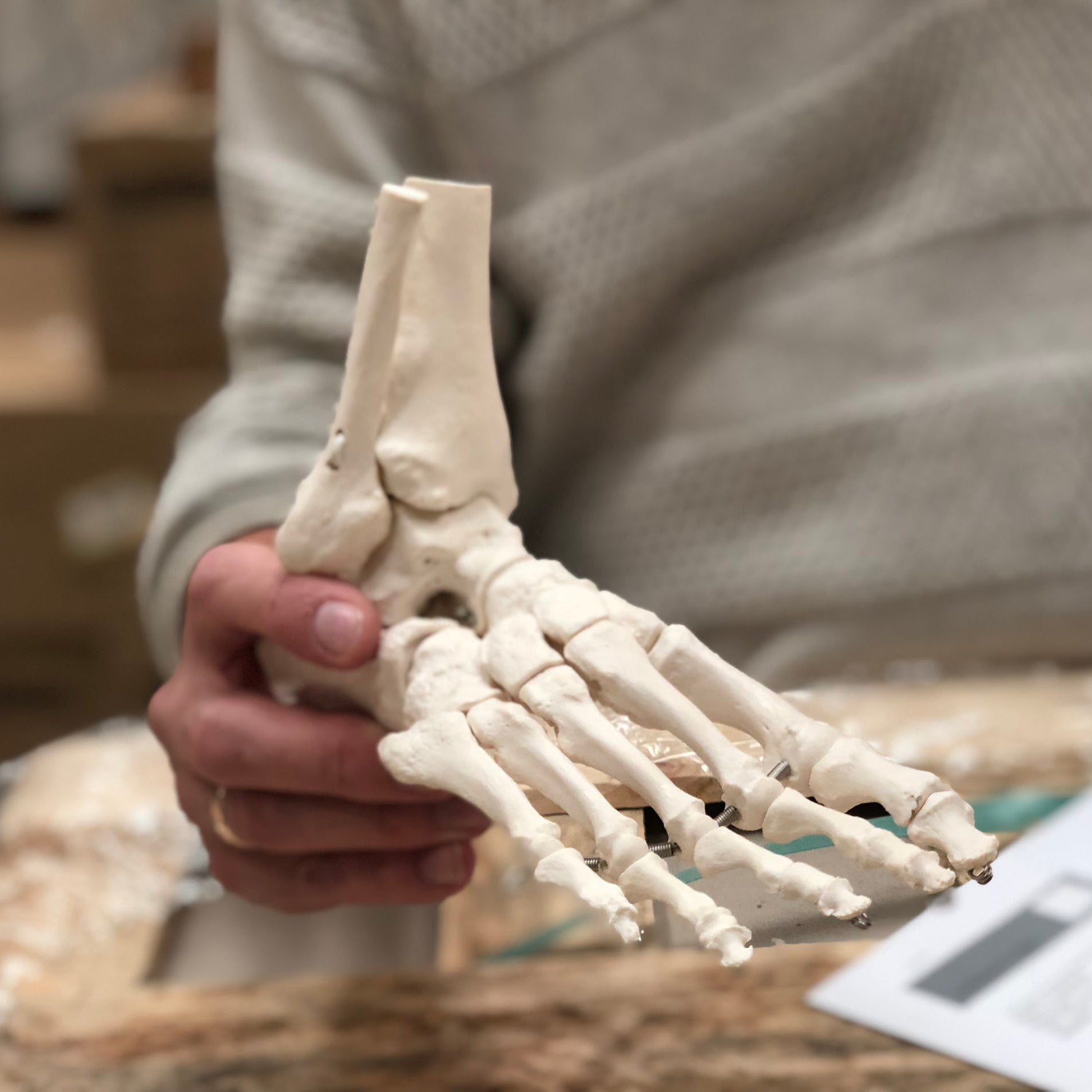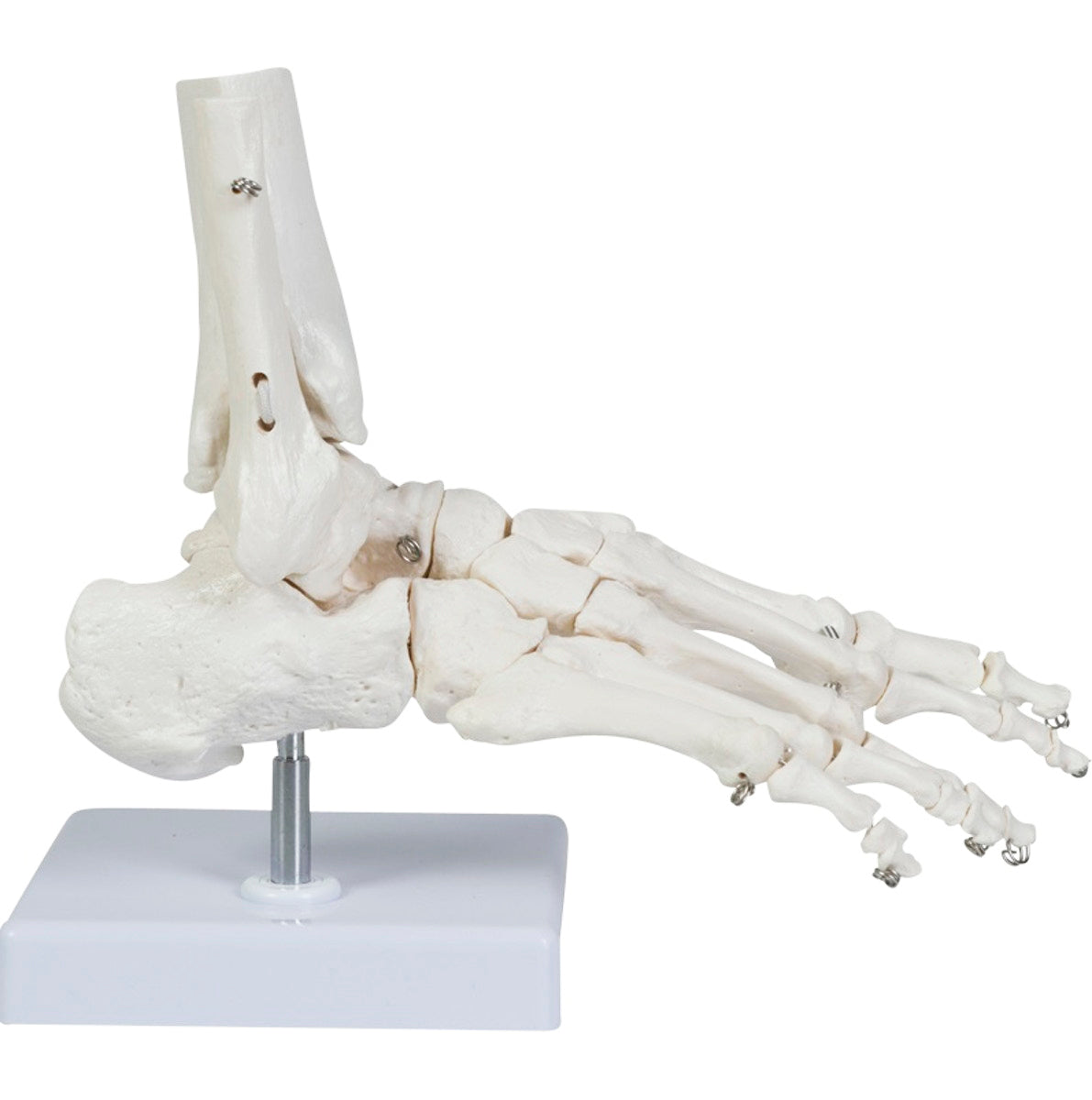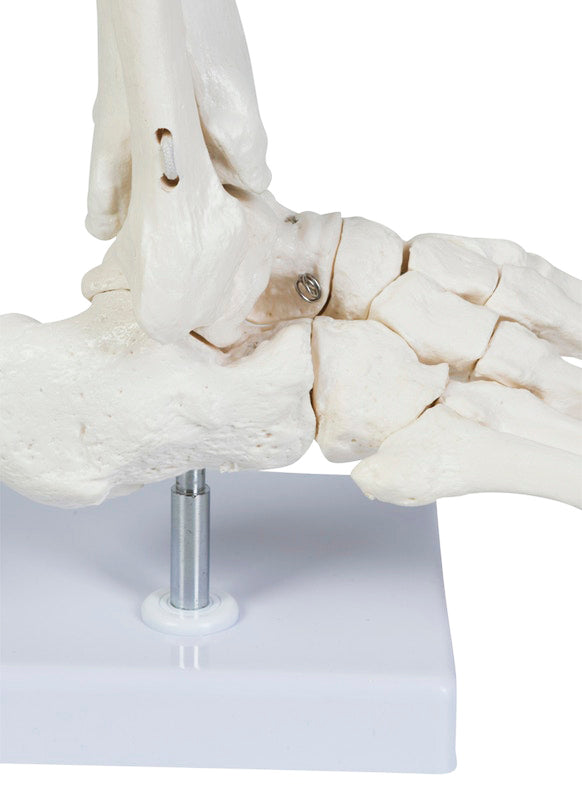SKU:EA-A109
Flexible model of the skeleton of the foot as well as a bit of the tibia and fibula presented on a removable stand
Flexible model of the skeleton of the foot as well as a bit of the tibia and fibula presented on a removable stand
19 in stock
Couldn't load pickup availability
This extremely simple foot model shows the foot and some of the bones of the lower leg in life size.
From heel to big toe, the foot measures approx. 21.5 cm and is delivered on a removable stand.
Anatomical features
Anatomical features
Anatomically speaking, the foot model shows a bit of the shin bone (tibia), a bit of the calf bone (fibula) and the entire foot (pedis) with its 26 bones. Therefore, the model only shows bones and joints. The level of detail is high, although sesame bones are not included.
Product flexibility
Product flexibility
In terms of movement, this model is flexible. The bones are held together by steel wire so that the foot always has the same fixed shape. However, this is not the case in the ankle joint (the talocrural joint between the lower leg bones and the root of the foot) and
the lower ankle joint (the subtalar joint below the talus/roller).
These joints are held together by elastics, and therefore movements can be demonstrated in them.
You can, however, make weak jerks in other joints, but these are not full movements at all.
The model can therefore be used both to demonstrate the angular movement of the foot joint called "plantarflexion-dorsiflexion", because this movement is primarily performed in the ankle joint, and "inversion-eversion" because this movement primarily takes place in the subtalar joint.
Clinical features
Clinical features
Clinically, this model is ideal for understanding many types of ankle fractures, metatarsal fractures and toe fractures.
It is also ideal for understanding luxations (joint slips) and foot deformities such as flat feet, clubfoot, metatarsus varus, hallux valgus (big toe bunion), hallux rigidus and hammer toe.
The model can perhaps also be used to understand disorders such as osteoarthritis in the foot (arthrosis) and rheumatoid arthritis (rheumatoid arthritis).
Share a link to this product
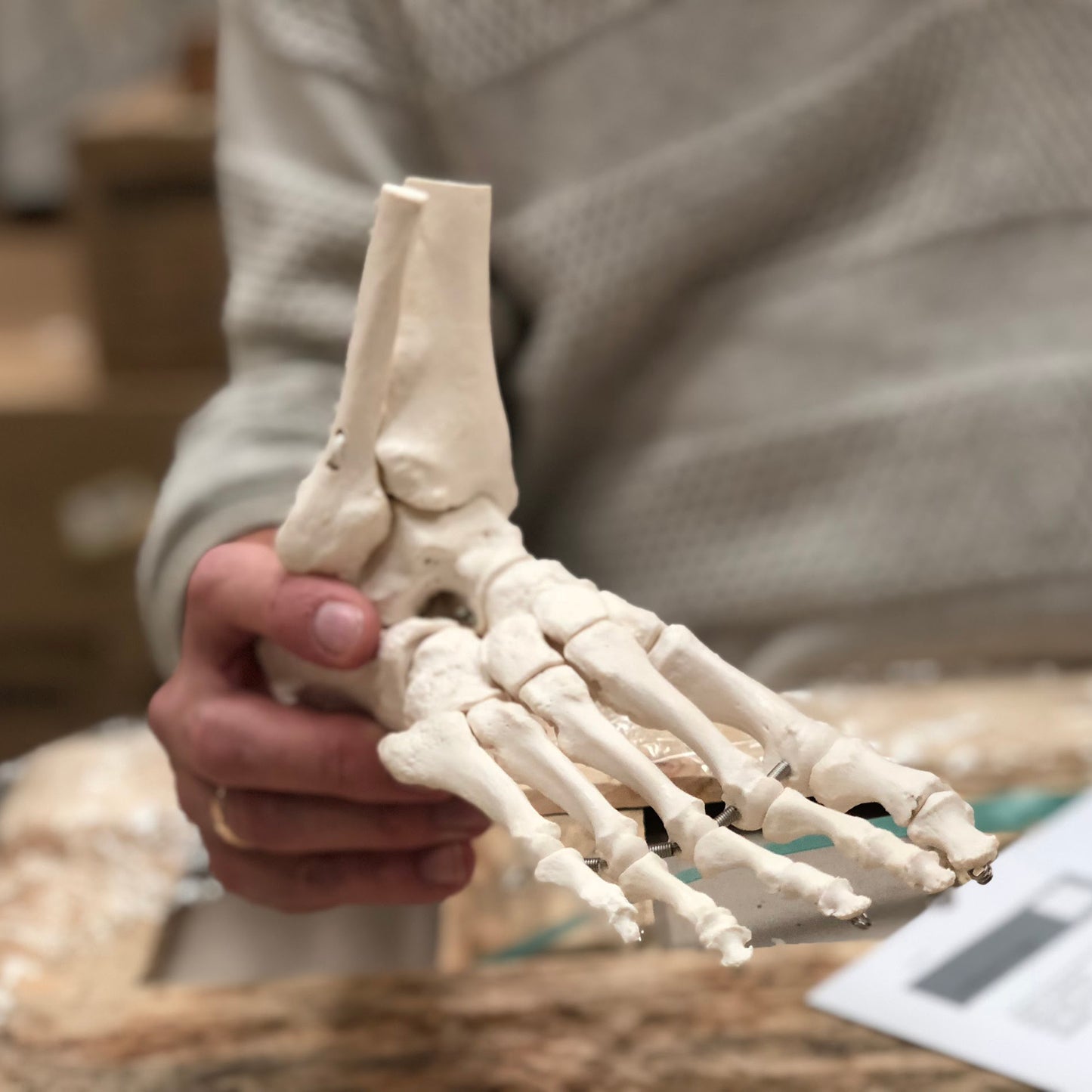
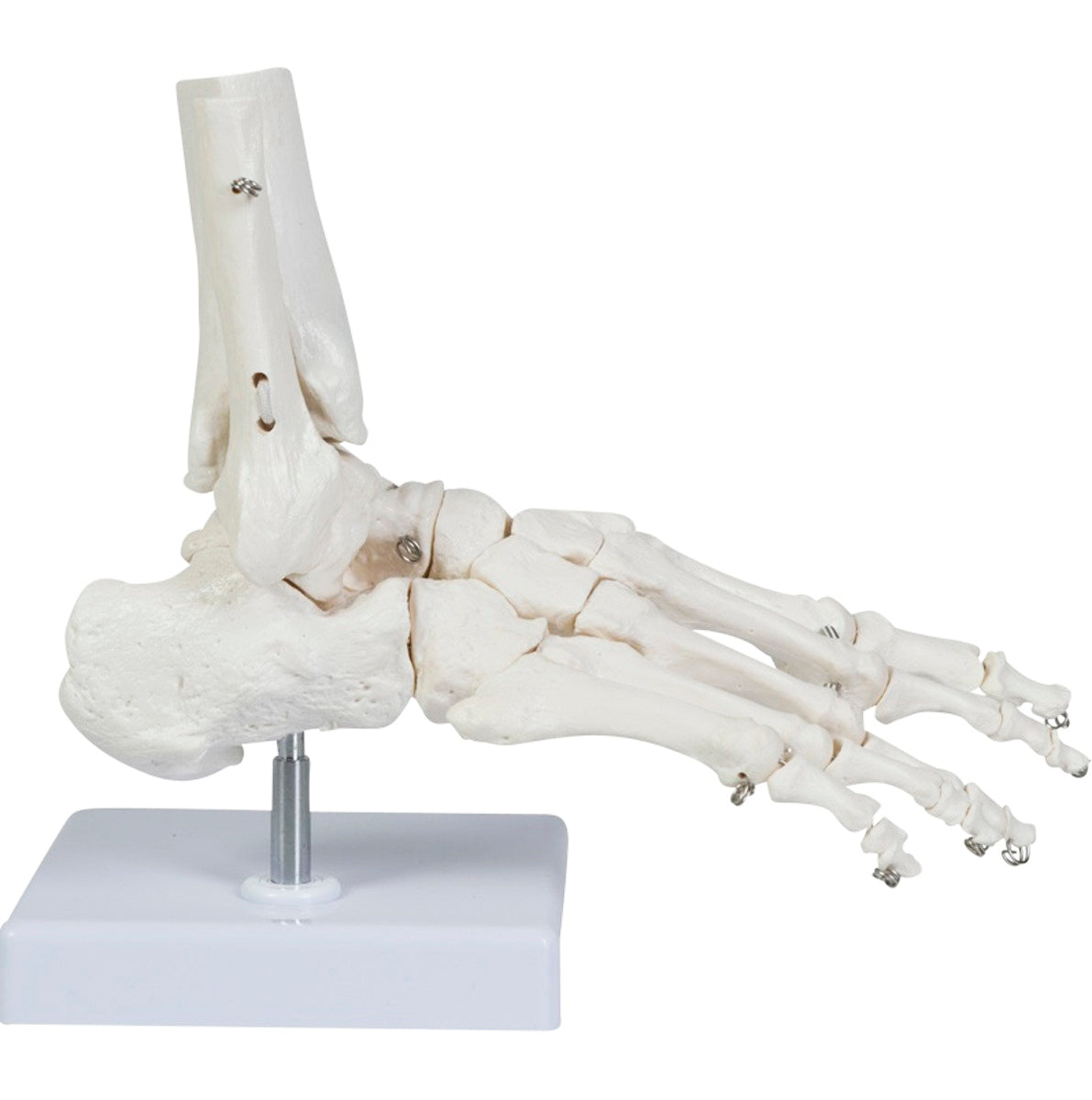
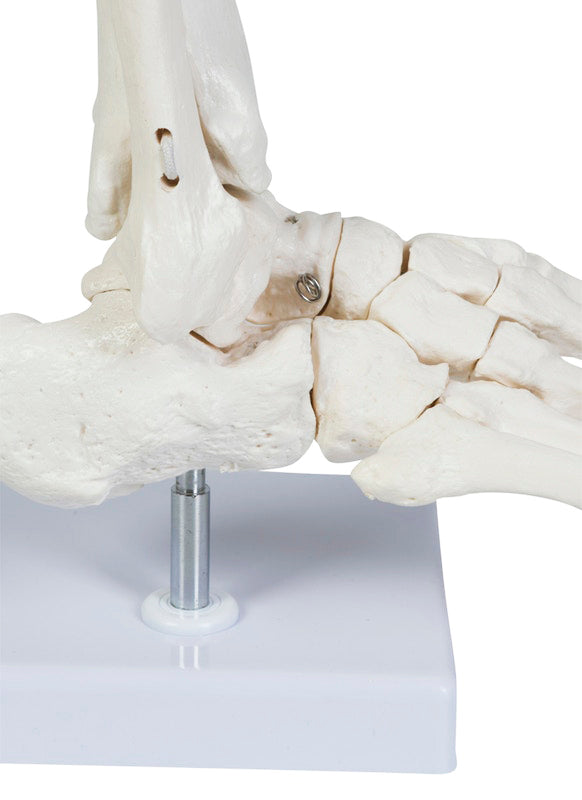
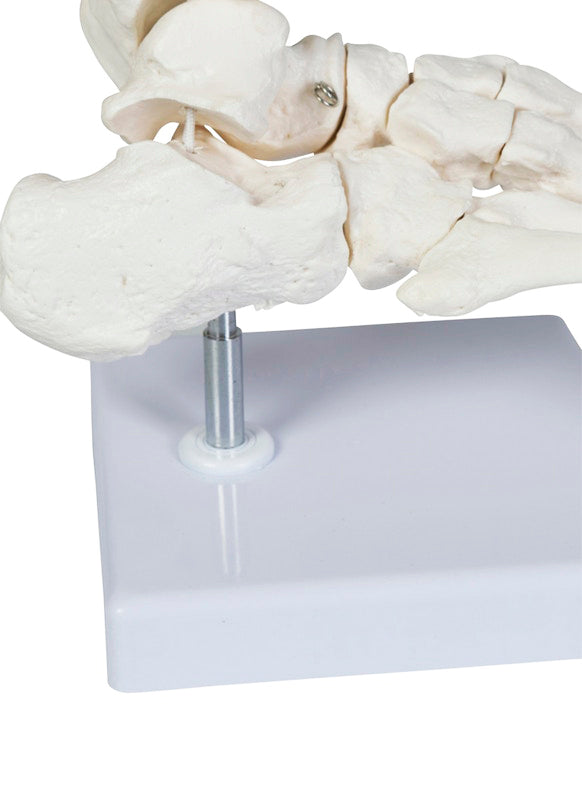


A safe deal
For 19 years I have been at the head of eAnatomi and sold anatomical models and posters to 'almost' everyone who has anything to do with anatomy in Denmark and abroad. When you shop at eAnatomi, you shop with me and I personally guarantee a safe deal.
Christian Birksø
Owner and founder of eAnatomi ApS

